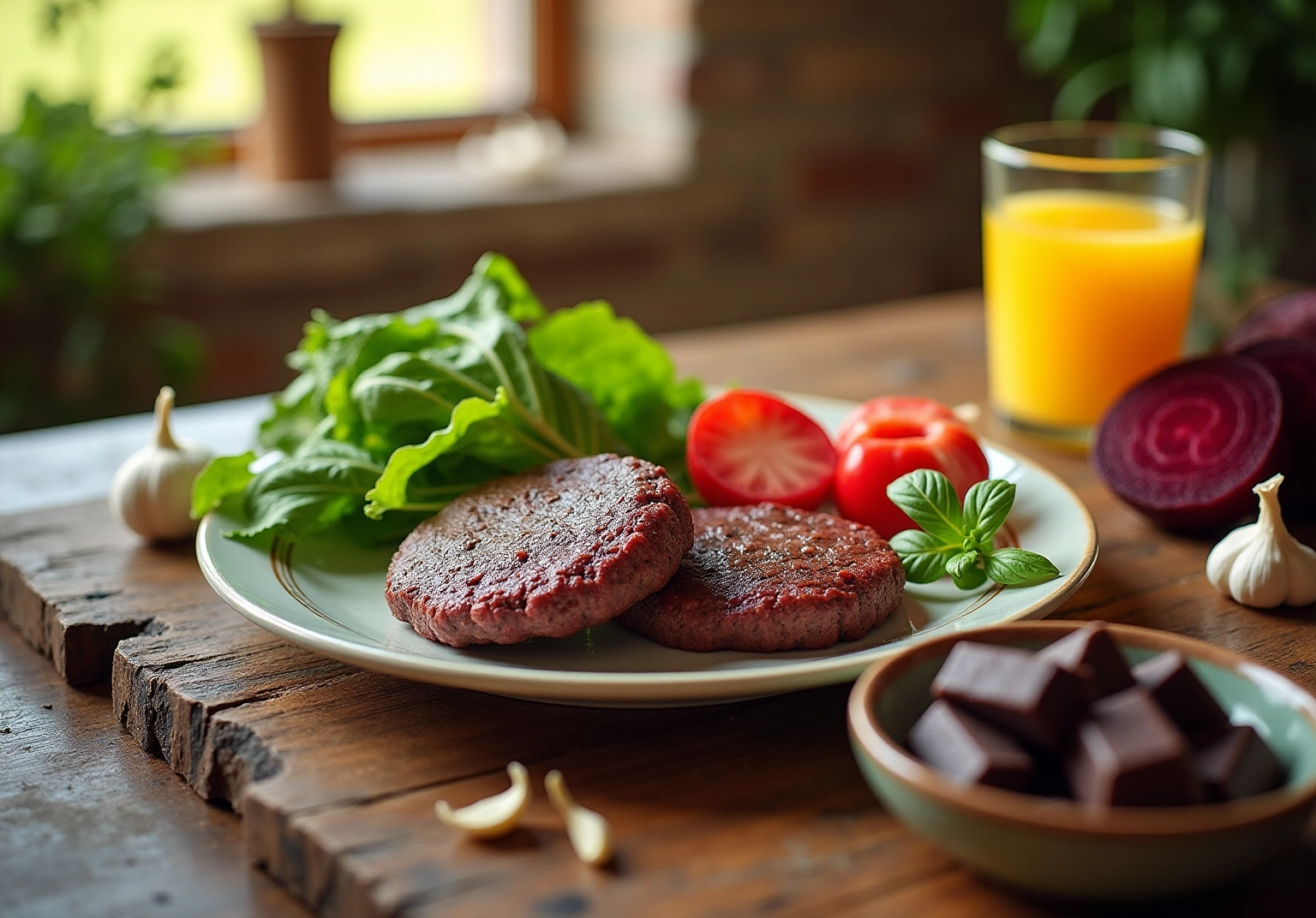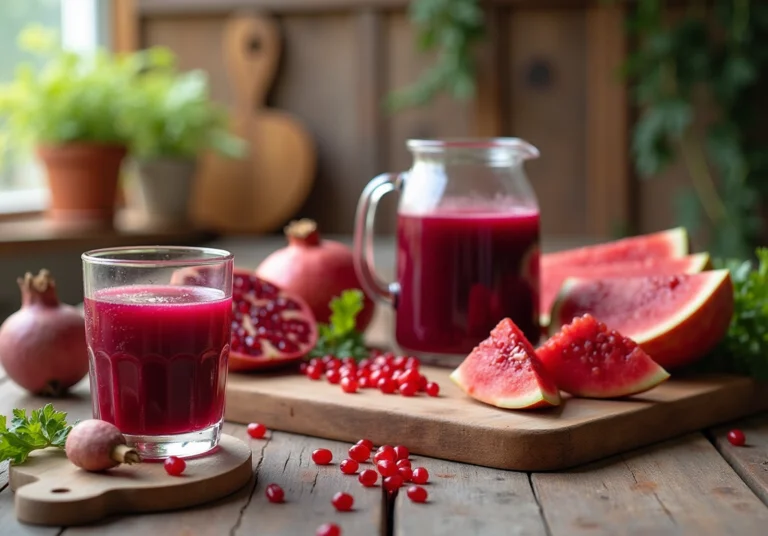10 Foods That Boost Nitric Oxide for Enhanced Health
Overview
The article emphasizes the importance of foods that enhance nitric oxide production, a key factor in promoting cardiovascular health and overall well-being. Notable foods include:
- Beets
- Dark chocolate
- Leafy greens
- Garlic
- Citrus fruits
- Pomegranates
- Watermelon
- Walnuts
- L-arginine-rich foods
These foods contribute to improved circulation and lower blood pressure due to their rich nutrient profiles and beneficial compounds.
Furthermore, incorporating these foods into your diet can lead to significant health benefits. For instance, beets are known for their high nitrate content, which the body converts into nitric oxide, thereby supporting vascular function. Dark chocolate, with its flavonoids, also plays a role in enhancing blood flow.
In addition to these, leafy greens and garlic are excellent choices for boosting nitric oxide levels. Citrus fruits and pomegranates provide antioxidants that help maintain healthy blood vessels, while watermelon and walnuts offer additional support through their unique nutrients.
As a result, including these foods in your daily meals can foster better cardiovascular health. Consider exploring recipes that feature these ingredients to maximize their benefits and support your well-being.
Introduction
The significance of nitric oxide in supporting cardiovascular health is paramount, as it is essential for regulating blood flow and pressure. With a growing interest in natural methods to improve well-being, attention is turning to foods that can enhance nitric oxide levels. This article delves into ten nutrient-rich options that not only increase nitric oxide production but also provide a multitude of health benefits. Yet, with so many appealing choices at hand, how can one identify which foods will best align with their health objectives?
ByKomi Nutritional Recipes: Enhance Nitric Oxide with Savory Beef Liver Patties
Savory beef liver patties are not just a tasty addition to your diet; they are also a nutrient-rich choice that can significantly enhance the production of nitrogen compounds. Beef liver is abundant in essential vitamins and minerals, including B vitamins, iron, and zinc, all of which contribute to sustaining overall well-being. Notably, a 3-ounce serving of beef liver provides 552% of the daily value of vitamin A and 73% of the daily value of vitamin B9 (folate), highlighting its exceptional nutrient density.
To prepare these patties, follow these steps:
- Combine ground beef liver with your choice of spices and herbs.
- Pan-fry until they reach an internal temperature of 160 degrees Fahrenheit, as recommended by the USDA, to ensure safety and optimal flavor.
- Soak the liver in milk for 30 to 60 minutes prior to cooking to help reduce bitterness.
Serving these patties with leafy greens can further enhance levels of nitrogen compounds due to the dietary nitrates found in foods that boost nitric oxide. This combination not only supports cardiovascular health but also contributes to improved energy and vitality.
However, it’s important to consume beef liver in moderation due to the potential risks associated with excessive vitamin A intake. By incorporating these nutrient-dense patties into your diet wisely, you can enjoy their benefits while maintaining a balanced nutritional approach.

Beets: A Powerful Source of Dietary Nitrates for Nitric Oxide Boost
Beets are among the richest foods that boost nitric oxide, providing a high source of dietary nitrates that your body converts into nitric oxide. This conversion process helps to dilate blood vessels, thereby improving circulation and lowering blood pressure. Have you considered incorporating beets into your diet? It can be as simple as:
- Roasting them
- Adding them to salads
- Drinking beet juice
Furthermore, studies have shown that regular consumption of beets, classified as foods that boost nitric oxide, can lead to improved athletic performance and enhanced cardiovascular health. By including beets in your meals, you not only enjoy their earthy flavor but also reap significant health benefits. Explore different ways to prepare and enjoy beets to maximize their positive impact on your well-being.
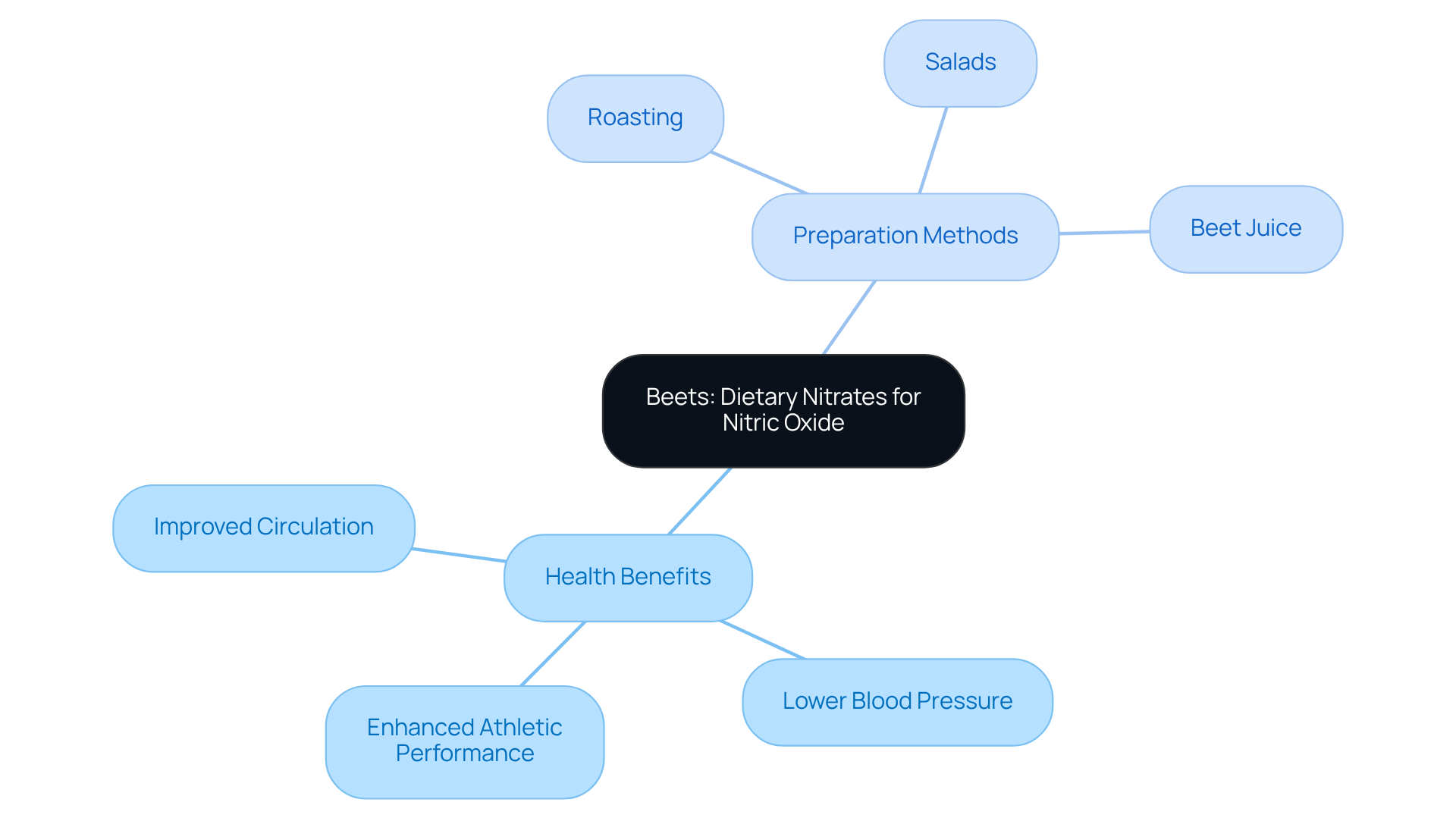
Dark Chocolate: Indulge in Flavonoids to Elevate Nitric Oxide Levels
Dark chocolate, especially those varieties with a cocoa content of 70% or higher, is considered one of the best foods that boost nitric oxide production due to its high flavonoid content. These beneficial compounds promote the relaxation of blood vessels, leading to improved circulation and lower blood pressure.
Research shows that regular consumption of dark chocolate can provide notable cardiovascular benefits, such as:
- A reduced risk of essential hypertension
- Enhanced endothelial function
For instance, studies have indicated that cocoa rich in flavonoids can:
- Lower systolic blood pressure by approximately 1.63 mm Hg
- Improve flow-mediated dilation (FMD) by 1.53%, suggesting a healthier vascular condition
Incorporating a small amount of dark chocolate into your daily diet can be a delightful way to support cardiovascular health while enjoying its rich flavors.
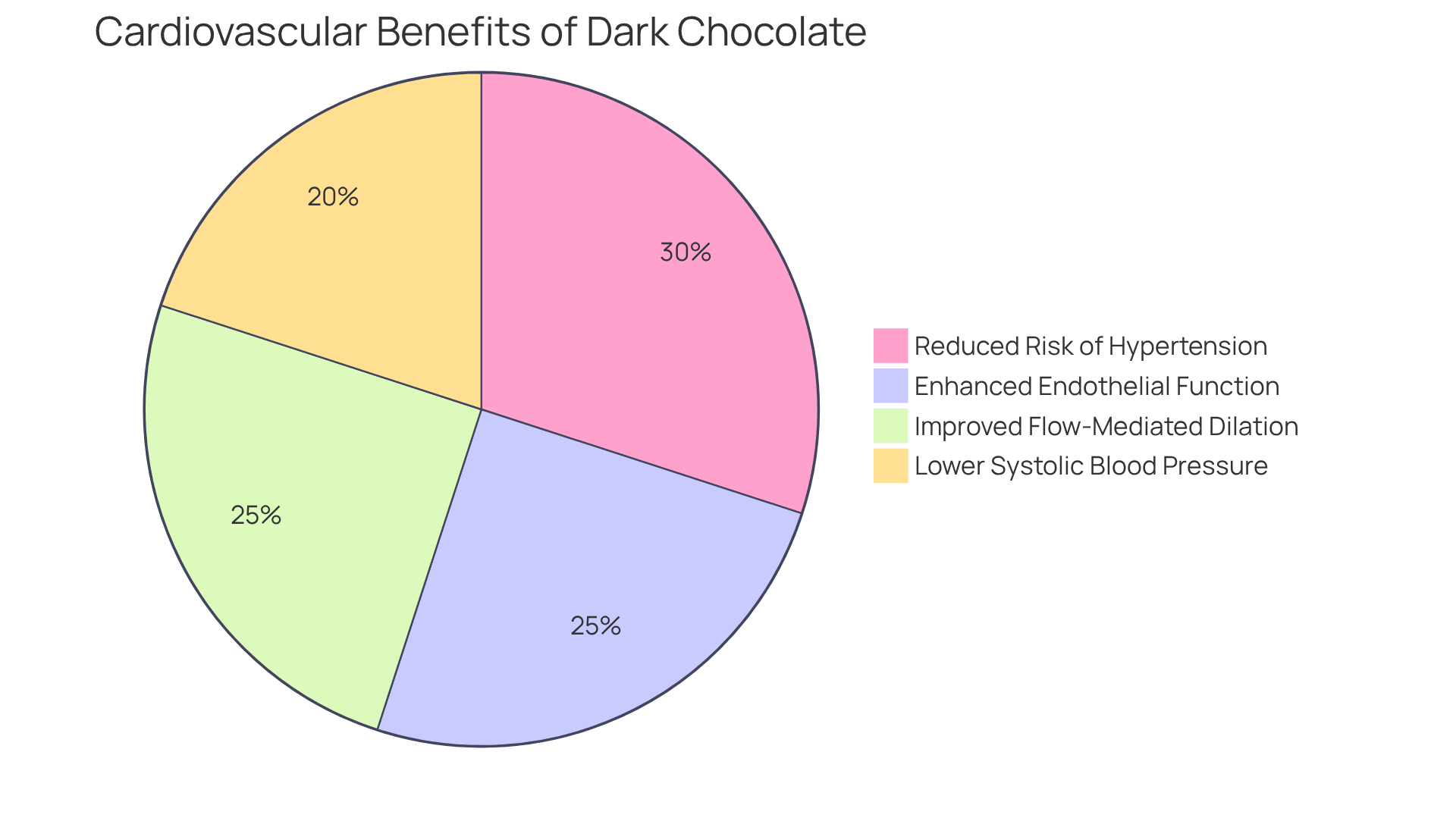
Leafy Greens: Nutrient-Dense Choices to Support Nitric Oxide Production
Leafy vegetables such as spinach, arugula, and kale are exceptional sources of nitrates, which the body converts into nitric oxide, categorizing them as foods that boost nitric oxide—a compound crucial for vascular function. Research shows that nitrate concentrations in leafy greens can vary greatly, ranging from 2.1 to 4526.3 mg/kg, with an impressive 92.7% of analyzed samples surpassing the limit of quantitation. Beyond their nitrate content, these vegetables are also rich in essential vitamins and minerals that contribute to overall well-being.
Consuming one cup or more of leafy greens daily can significantly lower blood pressure and reduce the risk of cardiovascular diseases. For optimal health benefits, aim to incorporate a diverse mix of these greens into your meals. Simple ways to achieve this include:
- Adding them to smoothies
- Tossing them into salads
- Incorporating them into stir-fries
Furthermore, as Sanja Luetic noted, the highest nitrate values were found in rucola and Swiss chard, underscoring the importance of these greens in your diet.
By incorporating leafy greens, which are among the foods that boost nitric oxide, as a fundamental part of your meals, you can enhance your nutrient intake and promote your body’s efficient production of nitrogen compounds. Why not start today? Explore various recipes and methods to enjoy these nutritious vegetables and take a step towards better health.

Garlic: A Flavorful Ally in Increasing Nitric Oxide Levels
Garlic is one of the foods that boost nitric oxide production in the body due to its richness in substances that significantly enhance nitrogen compound production. It plays a crucial role in stimulating nitric oxide synthase, the enzyme necessary for converting L-arginine into nitric oxide, which is vital for vascular health, particularly when combined with foods that boost nitric oxide. By adding fresh garlic to your meals, you not only enhance flavor but also reap considerable health benefits.
Research indicates that garlic can lead to reductions in blood pressure and improve overall cardiovascular performance. For example, aged garlic supplementation has been linked to a decrease of about 4 mm Hg in systolic blood pressure. Whether you choose to roast, sauté, or consume it raw, garlic serves as a powerful ally in promoting cardiovascular health and increasing beneficial compounds. This makes it an essential component of a heart-healthy diet that includes foods that boost nitric oxide.
Incorporating garlic into your daily routine could be a simple yet effective step towards better health. Why not experiment with different recipes to enjoy its flavor and benefits? Garlic is more than just a seasoning; it’s a key ingredient in nurturing your heart health.
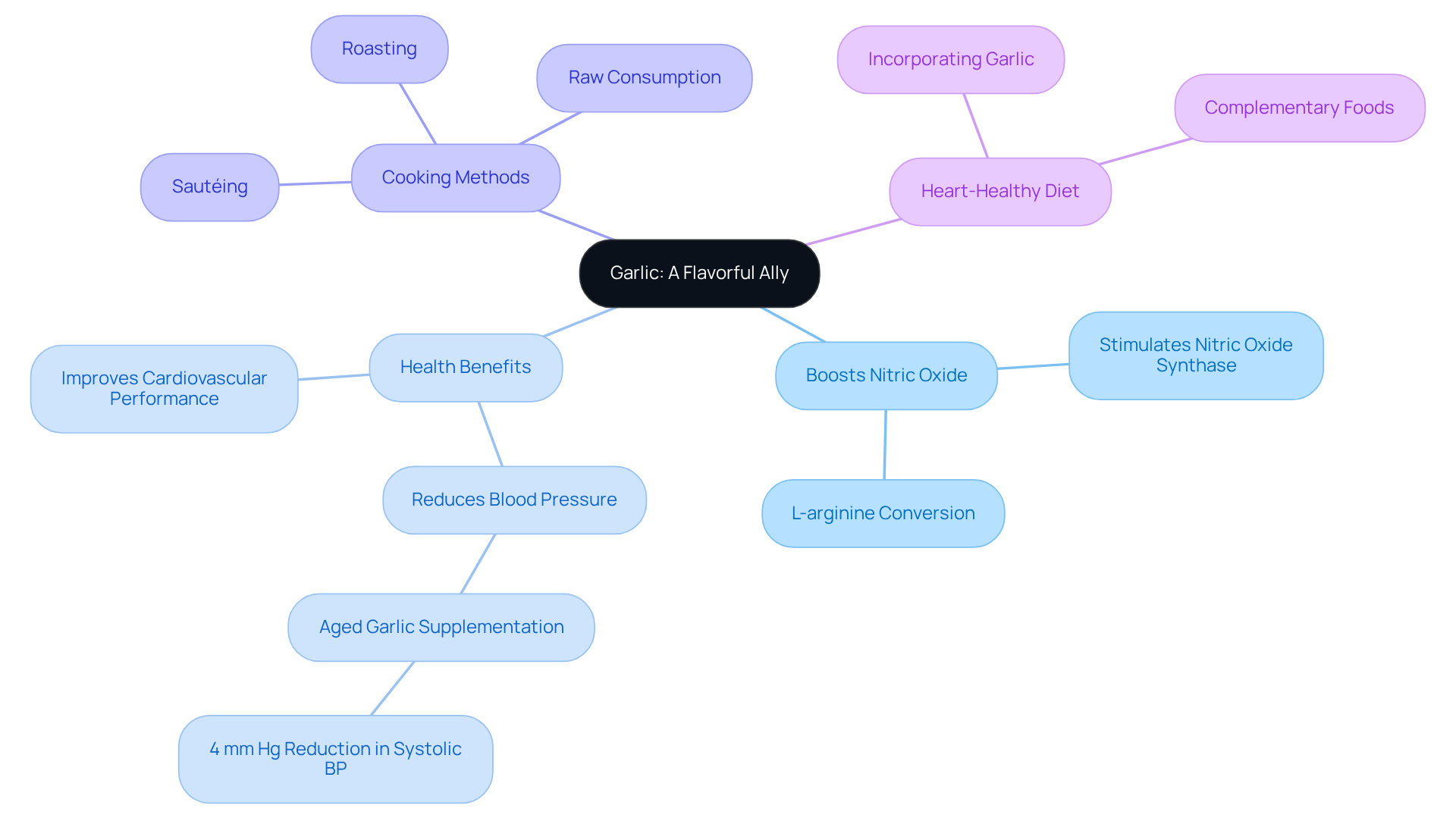
Citrus Fruits: Refreshing Sources of Vitamin C for Nitric Oxide Support
Citrus fruits, including oranges, lemons, and grapefruits, serve as excellent sources of vitamin C, an essential nutrient for maintaining levels of important compounds in the body. Vitamin C not only shields nitrogen compounds from oxidative harm but also enhances their availability for various physiological functions. Furthermore, oranges provide approximately 55 milligrams of calcium, which is vital for bone strength, while the potassium found in these fruits aids in regulating heartbeat and muscle function, potentially reducing blood pressure in those with hypertension.
Incorporating these fruits into your diet can be straightforward—enjoy them as snacks, add them to salads, or blend them into fresh juices. The health advantages extend beyond supporting specific compounds; these fruits are also linked to improved cardiovascular health and may help prevent cell damage and changes that can lead to cancer, making them an excellent choice for individuals looking to enhance their overall wellness.
As Rachael Ajmera points out, to raise nitrogen levels, you can consume foods that boost nitric oxide, including:
- beets
- garlic
- meat
- leafy greens
- citrus

Pomegranates: Antioxidant-Rich Fruits to Boost Nitric Oxide Levels
Pomegranates are a powerhouse of antioxidants, particularly polyphenols, which play an essential role in protecting nitrogen compounds from oxidative stress. This protective effect allows nitrogen monoxide to effectively improve blood vessel function and circulation.
Research indicates that regular consumption of pomegranate juice, with a recommended daily intake of 30-60 ml, can significantly enhance circulation, making it one of the foods that boost nitric oxide and a valuable addition to a heart-healthy diet. Nutritionists stress the significance of antioxidants in maintaining certain compounds, emphasizing that foods that boost nitric oxide are abundant in these elements and can enhance overall cardiovascular wellness.
Furthermore, it’s important to note that pomegranate juice may interact with certain medications, particularly statins. Therefore, individuals should consult with a healthcare provider before incorporating it into their diet. Incorporating pomegranate juice or fresh pomegranate seeds into salads and yogurt not only enhances flavor but also serves as a delightful method to include foods that boost nitric oxide in your diet.
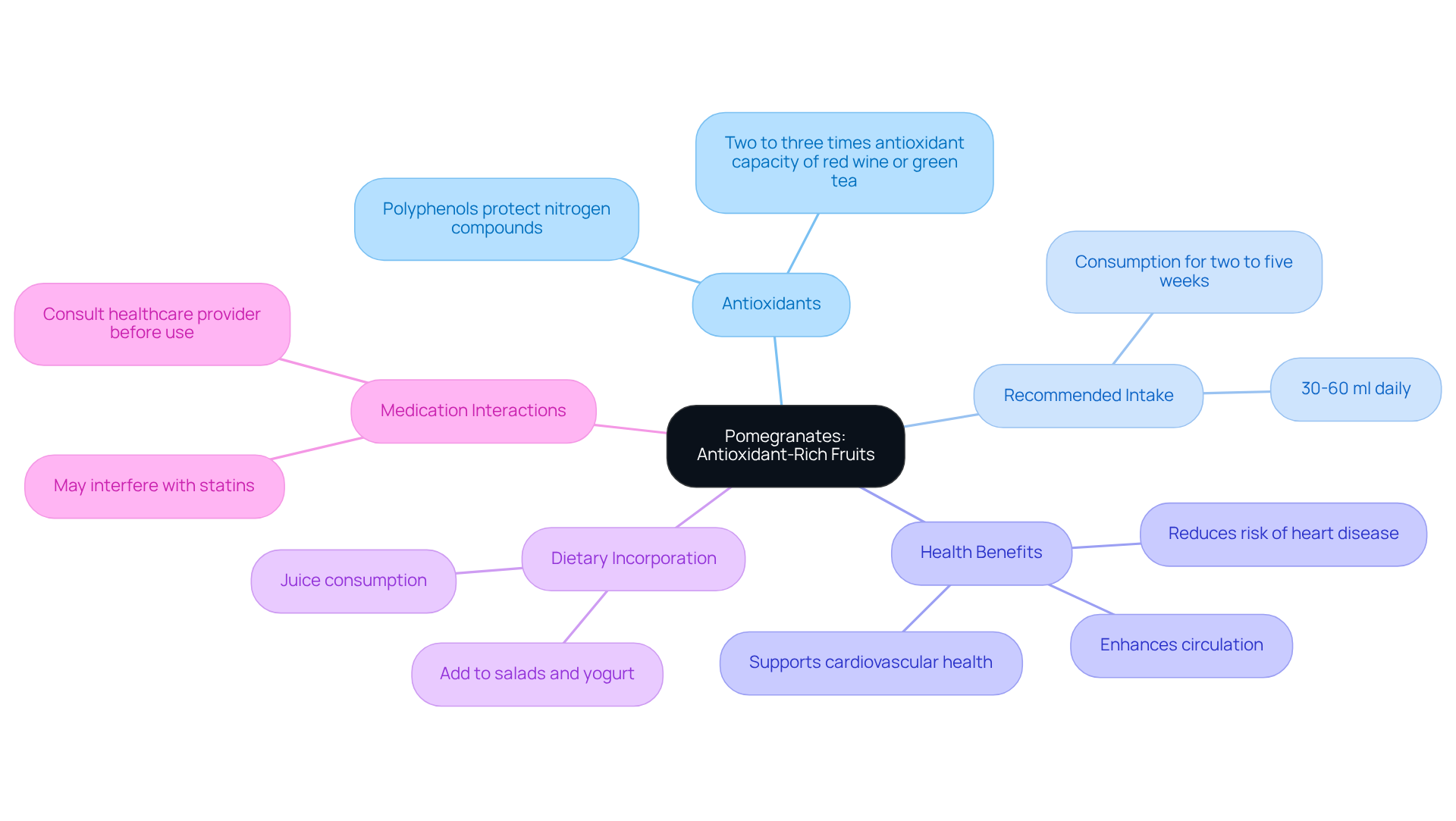
Watermelon: Hydrating Fruit Packed with Citrulline for Nitric Oxide Boost
Watermelon is not only a refreshing treat but also a powerhouse of citrulline, an amino acid that your body converts into arginine and subsequently into nitric oxide, categorizing it among the foods that boost nitric oxide. This transformation is essential for enhancing circulation and reducing pressure, making watermelon a superb option for heart health. Studies suggest that eating watermelon can notably reduce systolic pressure by roughly 4-6 mm Hg and overall cholesterol levels, emphasizing its promise as a natural antihypertensive agent.
How can you enjoy this delicious fruit? You can savor watermelon as a snack, blend it into smoothies, or enjoy it as juice to harness its hydrating properties and benefits that support vascular function. With its high citrulline content, particularly in the rind, which contains about 1113.5 μM of citrulline compared to 1505 μM in the flesh, watermelon is one of the foods that boost nitric oxide and serves as a delightful way to support vascular function and overall well-being.
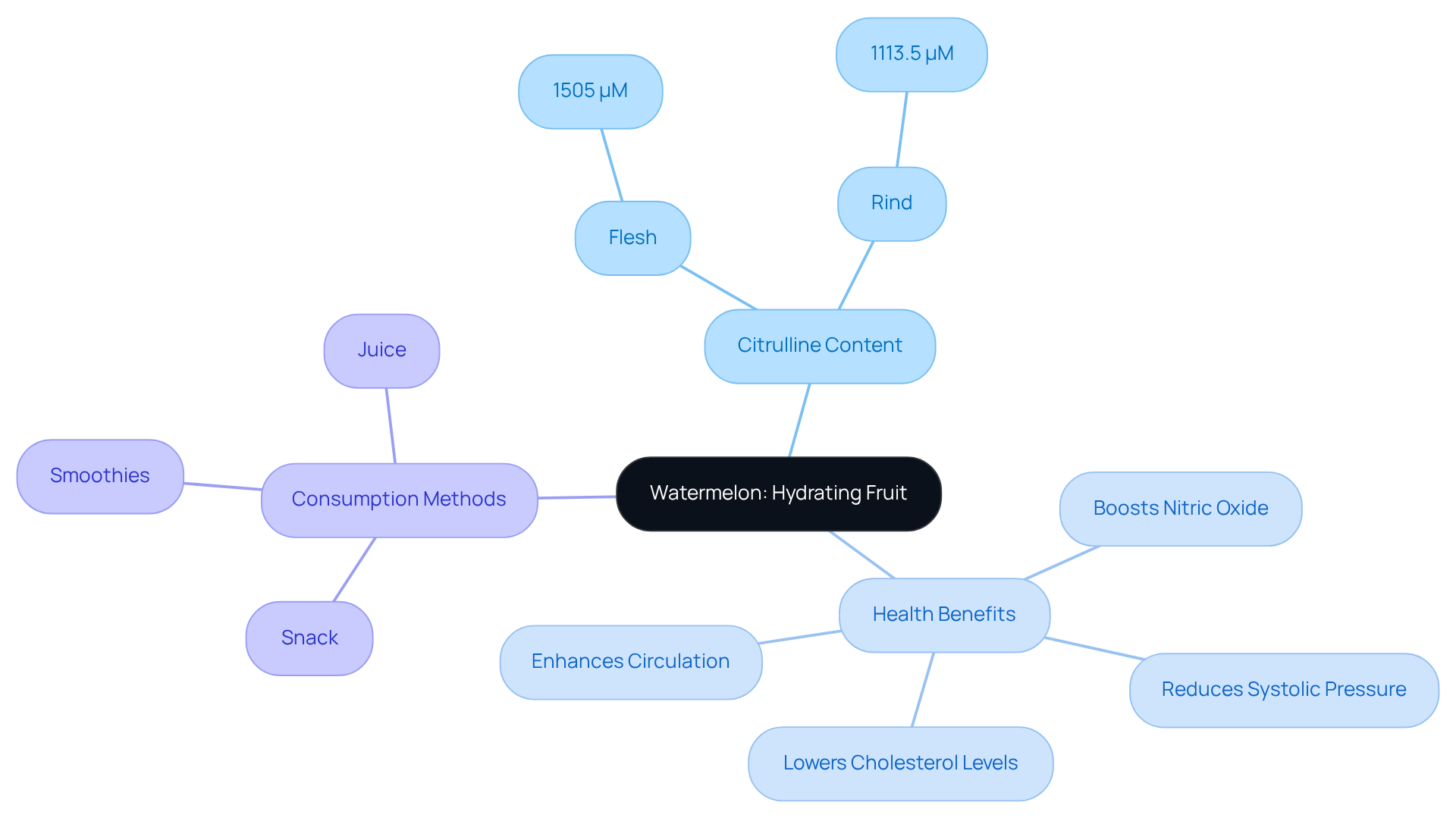
Walnuts: Nutritious Nuts to Enhance Nitric Oxide Production
Walnuts are considered one of the foods that boost nitric oxide, as they are a powerhouse of L-arginine, a vital amino acid essential for the production of nitric oxide, which is crucial for maintaining healthy vessels and overall cardiovascular function. Consistent intake of walnuts can significantly improve vessel function, leading to better cardiovascular health. Studies indicate that incorporating walnuts into your diet can enhance lipid profiles, with reductions in bad cholesterol (LDL) and increases in good cholesterol (HDL), thereby lowering the risk of heart disease. Indeed, walnut consumption has been associated with improved triglyceride and cholesterol levels, which are essential for cardiovascular well-being.
The L-arginine content in walnuts, which are among the foods that boost nitric oxide, not only supports nitric oxide production but also aids in regulating circulation pressure and enhancing endothelial function. Research has demonstrated that daily walnut consumption can improve vascular tone and lower blood pressure, which are vital factors in cardiovascular health. Furthermore, walnuts are rich in polyphenols and possess anti-inflammatory properties that help reduce inflammation and combat oxidative stress, further supporting heart health.
For optimal benefits, consider:
- Snacking on 4 to 6 walnuts daily
- Adding them to salads
- Incorporating them into baked goods
This adaptable nut, with its distinct nutritional profile, not only boosts your nitrogen levels but also promotes a heart-healthy diet, making it an excellent choice for individuals seeking to improve their overall health.

L-Arginine: Essential Amino Acid for Optimal Nitric Oxide Production
L-arginine is a vital amino acid that serves as a direct precursor to nitrogen monoxide. Found in various foods, including meat, dairy, and nuts, L-arginine plays a crucial role in our health. By adding L-arginine to your diet, you can include foods that boost nitric oxide production, enhancing blood circulation and supporting cardiovascular well-being.
Consider incorporating foods that boost nitric oxide, particularly those rich in L-arginine, into your meals. Furthermore, discussing supplementation with a healthcare provider can help you achieve optimal health benefits. Are you ready to explore how L-arginine can positively impact your health?
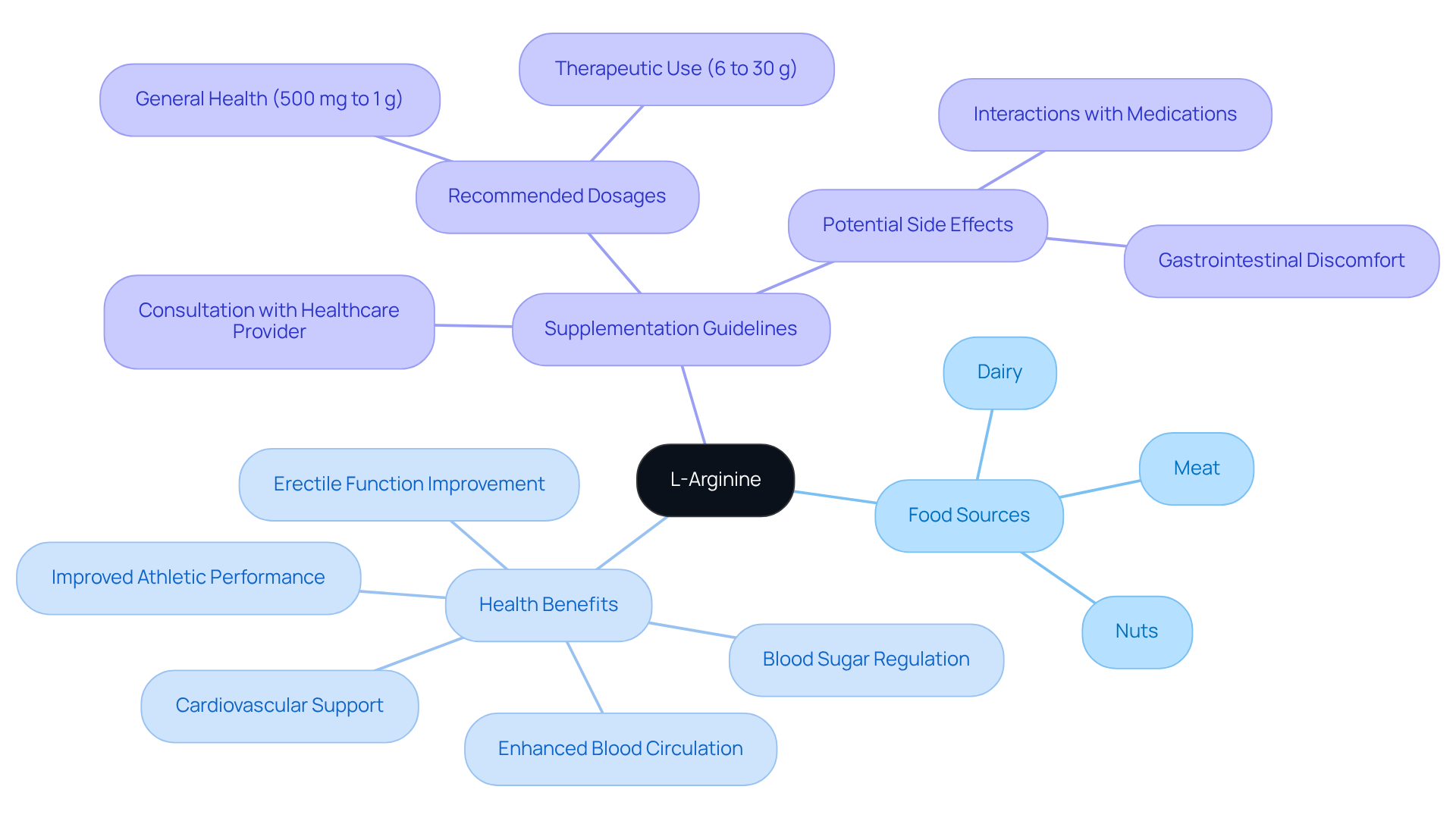
Conclusion
Incorporating foods that boost nitric oxide into daily diets can significantly enhance overall health and well-being. By focusing on nutrient-dense options like:
- Beets
- Dark chocolate
- Leafy greens
- Garlic
individuals can naturally support their cardiovascular health, improve circulation, and increase energy levels. Understanding the vital role of nitric oxide in the body underscores the importance of these dietary choices for maintaining optimal health.
The article highlights ten key foods known for their ability to elevate nitric oxide levels. From the rich dietary nitrates in beets and leafy greens to the flavonoids found in dark chocolate, each food offers unique benefits that contribute to heart health and improved vascular function. Additionally, ingredients like garlic and walnuts not only enhance flavor but also provide essential nutrients that facilitate nitric oxide production. Incorporating these foods into meals can be both enjoyable and beneficial.
Ultimately, embracing a diet rich in nitric oxide-boosting foods is a proactive step toward better health. By making informed choices and experimenting with various recipes, individuals can enhance their nutritional intake while reaping the cardiovascular benefits these foods provide. Taking action today can lead to a healthier tomorrow, making it essential to explore and enjoy these powerful dietary options.
Frequently Asked Questions
What are the nutritional benefits of savory beef liver patties?
Savory beef liver patties are nutrient-rich, providing essential vitamins and minerals such as B vitamins, iron, and zinc. A 3-ounce serving contains 552% of the daily value of vitamin A and 73% of the daily value of vitamin B9 (folate).
How should I prepare savory beef liver patties?
To prepare the patties, combine ground beef liver with spices and herbs, pan-fry until they reach an internal temperature of 160 degrees Fahrenheit, and soak the liver in milk for 30 to 60 minutes before cooking to reduce bitterness.
What can enhance the effects of beef liver patties on nitric oxide levels?
Serving beef liver patties with leafy greens can enhance nitrogen compound levels due to the dietary nitrates found in those foods, which support cardiovascular health and improve energy.
Are there any risks associated with consuming beef liver?
Yes, it is important to consume beef liver in moderation due to potential risks associated with excessive vitamin A intake.
How do beets contribute to nitric oxide production?
Beets are rich in dietary nitrates, which the body converts into nitric oxide, helping to dilate blood vessels, improve circulation, and lower blood pressure.
What are some ways to incorporate beets into my diet?
You can incorporate beets by roasting them, adding them to salads, or drinking beet juice.
What cardiovascular benefits are associated with regular beet consumption?
Regular consumption of beets can lead to improved athletic performance and enhanced cardiovascular health.
How does dark chocolate boost nitric oxide levels?
Dark chocolate, especially with a cocoa content of 70% or higher, is rich in flavonoids that promote blood vessel relaxation, improving circulation and lowering blood pressure.
What cardiovascular benefits are linked to dark chocolate consumption?
Regular consumption of dark chocolate can reduce the risk of essential hypertension and enhance endothelial function.
What is the recommended amount of dark chocolate to consume for health benefits?
Incorporating a small amount of dark chocolate into your daily diet can support cardiovascular health while allowing you to enjoy its rich flavors.
